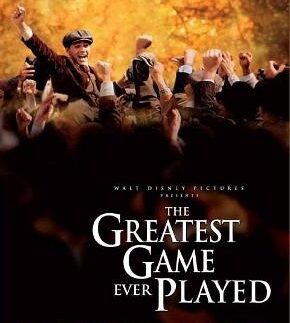Thank goodness for movies, teaching tales, analogies, symbols, illustrations, and whatever else we can hold in our hands and explore in detail. These are condensed representations of fast-paced, ever-flowing, and complex reality. Condensation slows time, simplifies and reduces details, and freezes processes to a small set of steps. All of this gives us a chance to explore and learn.
The following condensed view shows clearly: everyone goes through creative obstacles; the obstacles are basically the same; obstacles suck; obstacles can be overcome; even so, obstacles suck, but that is part of creative life.
A 2005 film has condensed a lifetime of creative obstacles down to two hours. The fact-based movie, The Greatest Game Ever Played, uses the 1913 U.S. Open challenge between professional golfers and a highly talented outsider amateur to show what each faced to get to a pivotal playoff. We get a glimpse of their childhood and current situation. On top of that, brilliant photography swings from beautiful nature and dramatic shots to special effect representations showing us how champion minds focus and how they must face inner critics.
Movie trailer
Watching Tips
1. View the film all the way through for enjoyment’s sake (golfer or not, you are likely to enjoy this film).
2. Watch again and list all the shown and inferred obstacles the main golfers had to face.
3. Indicate which ones cause stuckness for you.
4. Work on accepting: these obstacles are not unique to you; obstacles suck, but we have to keep working; obstacles can be overcome.
5. For fun and additional surprising insights, step into the two main characters’ mindsets as you imagine them. Play with imagining how they might overcome your obstacles.
Resources:
Wikipedia film info
The image above: “The Greatest Game Ever Played poster” Licensed under Fair use via Wikipedia
